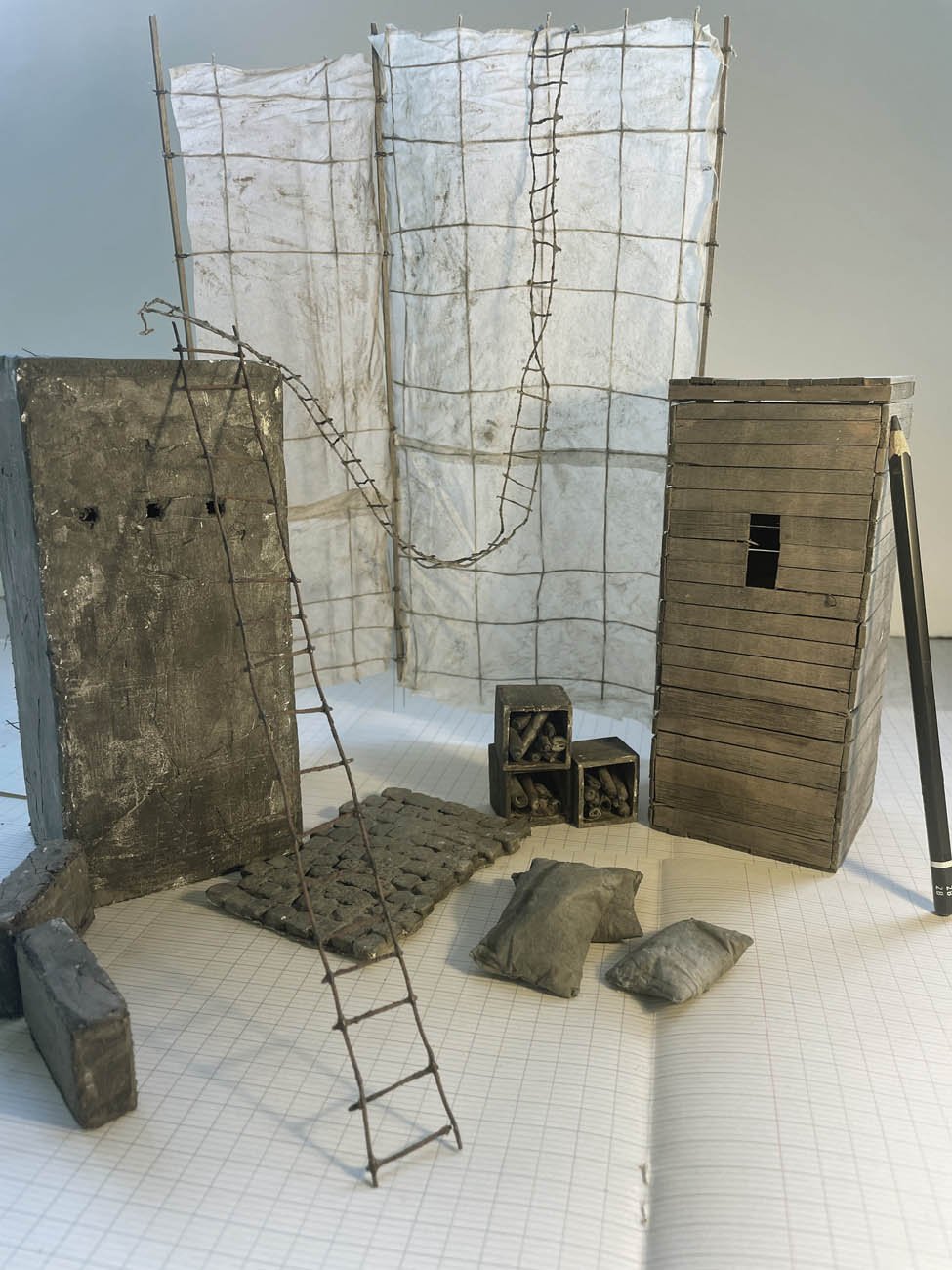Approche artistique
Le travail plastique d’Édith Dufaux se compose de quatre catégories majeures, la photographie, le monotype, le dessin, et la peinture.
Dans son travail photographique, Édith Dufaux utilise la boîte, à la fois contenant et élément de construction, comme unité minimale lui permettant d’entrer dans un processus graduel d’agencement architectural. Par la maquette, elle construit des lieux brouillant les échelles et la perception. Elle peut ainsi y mener un travail d’exploration « physique ».
Parallèlement, celle-ci poursuit un travail d’impression via la technique du monotype, héritière pour elle du pouvoir des ombres et des lumières photographiques. Les monotypes, à travers de courts récits, lui permettent de développer un travail sur le rapport hallucinatoire du corps, de l’espace et de la mémoire.
Par ailleurs, Édith Dufaux élabore des peintures ou des dessins sur papier de plus grandes dimensions à partir de « notes photographiques » de taille réduite, prenant toujours leurs sources dans des installations créées à l’intérieur de sa « boite d’optique ».
Les différentes techniques utilisées par l’artiste lui permettent d’entretenir un dialogue entre le modèle réduit et l’échelle humaine. Ce processus circulaire décline et prolonge ses idées dans un échange ininterrompu entre la photographie, le dessin, le monotype et la peinture.
Artistic approach
Edith Dufaux's plastic work consists of four major categories, photography, monotype, drawing, and painting.
In her photographic works, Edith Dufaux uses the box as both a container and a construction element. It is used as a minimal building unit that allows her to enter into a gradual process of architectural staging. Through the use of models, she creates places that blur the idea of scale and perception and is able to carry out a work of “physical” exploration.
In addition, the artist keeps working on prints using the monotype technique; a technique that, to her, encapsulates the power of shadows and photographic lights. Through short stories, the monotypes allow her to develop works that deal with the hallucinatory relationship that exists between space, memory and the body.
Furthermore, Edith Dufaux is also working on larger paintings and drawings on paper using reduced-size “photographic notes” whose inspiration come from installations she has created inside her “optical box”.
The different techniques used by the artist allow her to maintain a dialogue between the model scale and the human scale. This circular process unwraps and extends her ideas in an uninterrupted series of exchanges between photography, drawing, monotype and painting.
Ci-dessus, le “petit théâtre” utilisé par Edith Dufaux pour assembler les modules fabriqués par ses soins qui lui permettent de mettre en scène ses photographies. (Installation à l’occasion de l’exposition Grand Trouble de la Halle St Pierre, Paris, 2017).
Above, the “ little theater” used by Edith Dufaux to assemble the modules she has created in order for her to stage her photographs. (Installation created for the show Grand Trouble, la Halle St Pierre, Paris, 2017).
*
A gauche, quelques exemples d’éléments fabriqués par l’artiste pour créer ses photos (bois, enduit, plâtre, papier japonais, métal, fil de lin etc.)
Left, a collection of elements made by the artist to create her photographs (wood, plaster, Japanese paper, metal, linen yarn, etc.)
*
Ci-dessous, installation du “petit théâtre” en préparation d’une photographie de la série “Rue au linge” et le résultat final.
Below, installation of the “little theater” in preparation for a photograph of the series “Rue au linge” and the final result.
Rue au linge 2, 2013



